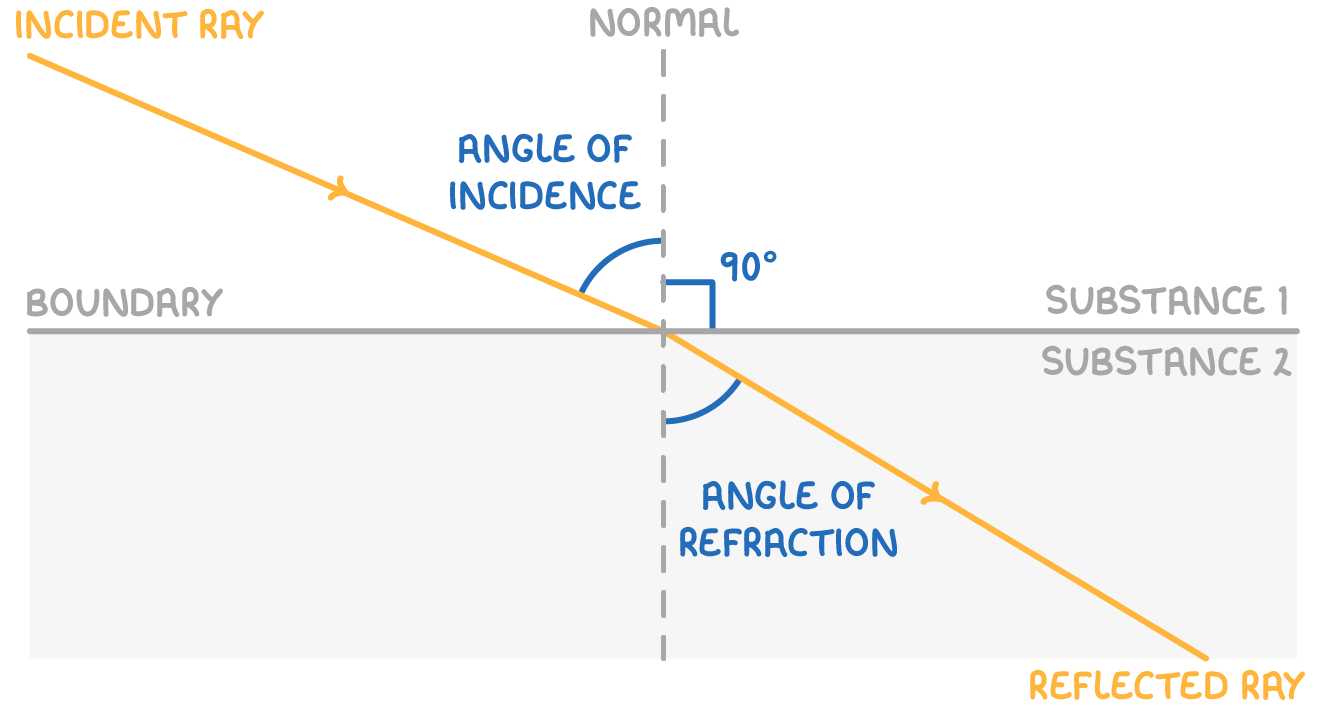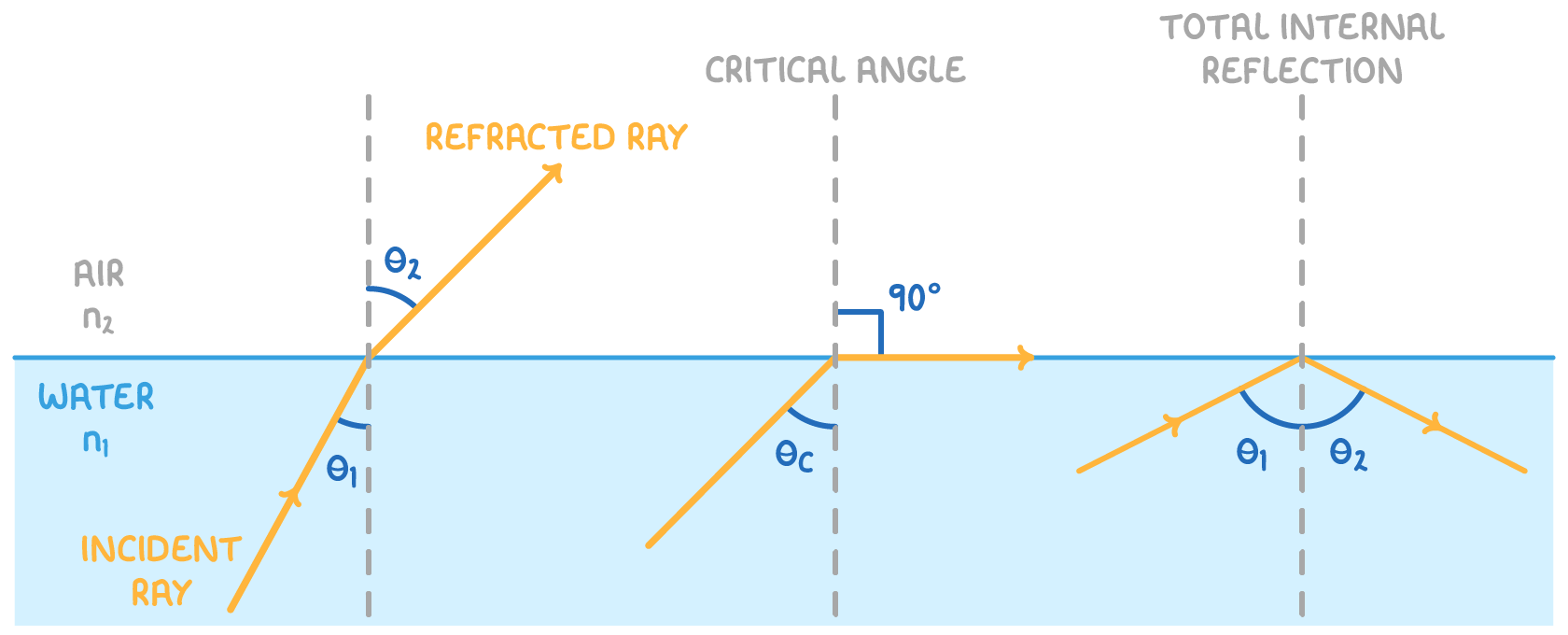Refraction At A Plane Surface
This lesson covers:
- Reflection of waves at a boundary or interface
- Key concepts in wave refraction
- Calculating refractive index using Snell's law
- Explaining total internal reflection
Reflection of Waves
Reflection occurs when a wave hits a boundary between two materials, bouncing off the surface in a new direction. Key properties include:
- The angle of incidence (i) is the angle at which a wave strikes a surface. It is equal to the angle of reflection (r), which is the angle at which the wave bounces away.
You can observe reflection with:
- A ripple tank for water waves
- A ray box for light waves

Refraction: Waves Changing Direction and Speed
Refraction happens when waves enter a new medium, causing them to change speed and direction.
Important points:
- If a wave slows down, it refracts towards the normal line; if it speeds up, it refracts away.
- The change in speed is due to a shift in the wave's wavelength, while its frequency remains constant.
- Refraction can be seen by passing light through different materials, like glass.

Using Snell's law to calculate refractive index
The refractive index (n) is the ratio of light's speed in a vacuum (c) to its speed in a material (v):
n = vc
Snell's law links the angles of incidence and refraction to the refractive indices of two materials:
n2n1=sinθ1sinθ2
Where:
- θ1 = Angle of incidence
- θ2 = Angle of refraction
- n1, n2 = Refractive indices of each material
By measuring these angles, you can calculate a material's refractive index.
Total internal reflection

Total internal reflection occurs when light moves from a denser to a rarer medium (high to low refractive index):
- It happens at the critical angle (θc), where the angle of refraction is 90°.
- If the incidence angle (θ) is greater than θc, all light reflects back into the original medium.
The critical angle depends on the refractive index:
sinθc=n1
As n increases, θc decreases. Thus, materials with higher refractive indices have lower critical angles for total internal reflection.
Worked example: - Calculating the refractive index using Snell's law
A light ray passes from air into glass, making an angle of 30° with the normal in air. The angle of refraction in the glass is 19°. Calculate the refractive index of the glass.
Step 1: Snell's law formula
n2n1=sinθ1sinθ2
$
Step 2: Rearrangement for (n2)
n2=n1×sinθ2sinθ1
Step 3: Substitution and correct evaluation
n2=1×sin(19)sin(30)=1.54